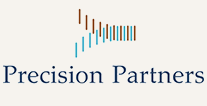The Moment of Truth: One Year Later
It’s been exactly one year since you implemented your new Advancement Constituent Relationship Management (CRM) platform. The project absorbed countless hours from your team, required significant financial investment, and promised transformative results for your advancement CRM operation.
Now your University President, Hospital CEO, or Advisory Board wants to know: Was it worth it? What’s the realized return on that multi-million-dollar investment?
This isn’t a hypothetical scenario—it’s an inevitability. Your ability to answer this question convincingly could determine future funding for your department, the trajectory of your career, and, ultimately, your institution’s fundraising success.
In the context of Advancement, CRM ROI (Return on Investment) means the measurable financial, operational, and strategic gains achieved through more effective relationship management, improved data usage, and optimized fundraising processes.
It’s essential to acknowledge upfront: some benefits, especially related to major gifts and donor lifetime value, take more than one year to materialize fully. However, Year One should still provide clear signals of progress, operational improvements, and early wins that validate the investment and build momentum.
Beyond Technical Metrics: Measuring True ROI
The challenge in measuring Advancement CRM ROI isn’t a lack of data—it’s identifying which data matters. Technical adoption metrics like user logins or the number of records updated are necessary but insufficient. True ROI manifests across three dimensions that speak directly to institutional leadership:
-
Financial Impact
The most direct measure of ROI comes from quantifiable financial improvements. Since implementing your new Advancement CRM platform, can you demonstrate:
- Increased gift revenue from targeted donor segments?
- Reduced costs in advancement operations (such as gift processing or reporting)?
- Improved fundraiser productivity (e.g., gifts closed or dollars raised per full-time employee)?
- Higher donor retention rates, which directly impact long-term fundraising potential?
Compile these figures into a single dashboard showing year-over-year comparisons. Even if large gifts are still being nurtured, early indicators such as donor retention, annual fund increases, and portfolio penetration can provide compelling proof points.
Benchmark Tip:
Industry research suggests CRM modernization can support a 2–5% increase in donor retention and a 10–20% improvement in operational efficiency within the first 12–18 months.
-
Process Improvements
Beyond financial metrics, Advancement CRM investments should create meaningful operational efficiencies. Document and quantify improvements such as:
- Reduction in manual data entry hours
- Faster gift processing timeframes (from receipt to acknowledgment)
- Decreased report generation and analysis time
- Reduction in duplicate records and overall data hygiene improvements
- More timely and accurate financial reconciliation with partners like Finance and Accounting
Calculate the approximate labor cost savings or productivity gains for each process improvement. Even a 10-minute savings per process, multiplied across hundreds of transactions, can have a major impact over a fiscal year.
-
Strategic Advancement Capabilities
Perhaps the most transformational—but often overlooked—ROI comes from new capabilities that were previously impossible:
- New segmentation strategies for personalized donor outreach
- Enhanced prospect identification through predictive analytics and scoring models
- Better coordination between annual giving, leadership giving, and major gifts programs
- Improved stewardship tracking and follow-up
- More sophisticated multi-channel campaign management and reporting
Document specific examples where new Advancement CRM capabilities directly influenced fundraising outcomes, even if those outcomes are still growing. Case studies can be as valuable as metrics in demonstrating long-term strategic value.
Acknowledging Attribution Challenges in your Advancement CRM
In Advancement, outcomes are rarely the result of a single intervention. Leadership initiatives, economic conditions, campaign launches—all these factors influence results alongside your CRM improvements.
Be honest: direct attribution can be difficult. Instead of trying to isolate Advancement CRM impact perfectly, focus on presenting a cohesive story using quantitative metrics, stakeholder feedback, and real-world examples. This balanced approach builds credibility and resilience into your ROI narrative.
Gathering Compelling Evidence
Preparing for the ROI conversation requires deliberate evidence collection across multiple stakeholder groups:
- Advancement Operations Staff: Capture hard numbers: time saved, errors reduced, processes automated, quality improved.
- Donors: Gather early feedback on improved donor experiences, such as faster acknowledgment, more personalized communication, or seamless event engagement.
- Frontline Fundraisers: Document how the Advancement CRM helped gift officers: more visits, better prospect intelligence, smoother cultivation, and solicitation processes.
- Institutional Partners: Showcase cross-functional wins, such as better alum engagement or faster finance reconciliation, demonstrating enterprise-wide value.
- Leadership: Request specific examples where improved data access or reporting influenced better strategic decisions.
Remember: The best ROI stories combine numbers with narratives.
Addressing Works in Progress Honestly
No advancement CRM implementation achieves 100% of its goals in Year One. Acknowledging ongoing challenges is not a weakness—it’s a sign of mature leadership and responsible stewardship.
Build a structured improvement roadmap that shows:
- Functionality is still being phased in
- User adoption programs underway
- Data quality initiatives in motion
- Training and change management investments
- Future integration points (e.g., marketing platforms, grants management systems, event systems)
Include timelines, resource needs, and expected impact for each item. This shows your institution that you’re managing the CRM investment like a strategic business asset, not a sunk cost.
Presenting ROI Effectively
When the moment arrives to present your ROI assessment:
- Start with direct financial impacts that tie CRM changes to revenue growth, cost savings, or donor retention.
- Highlight 2–3 vivid before-and-after examples with measurable and human outcomes.
- Translate efficiency gains into dollar value or FTE (full-time equivalent) savings.
- Address ongoing challenges honestly while sharing your roadmap for further optimization.
- Link CRM capabilities to future priorities such as capital campaigns, pipeline expansion, or increased donor engagement.
Pro tip: Institutional leaders care about outcomes, not features. Focus your narrative on how the Advancement CRM has helped advance the mission, not on system bells and whistles.
Continuous ROI Improvement
The most successful Advancement Services leaders view ROI measurement as a living discipline, not a one-time event.
Establish quarterly processes to:
- Track key financial, operational, and strategic metrics
- Collect new success stories across Advancement teams
- Surface adoption gaps or underperforming areas
- Optimize processes and training based on evolving needs
- Communicate wins—both big and small—across institutional leadership
This proactive approach turns ROI from a defensive necessity into a strategic management tool that continuously drives better fundraising and engagement outcomes.
By thoughtfully measuring, managing, and communicating the value of your Advancement CRM platform, you not only justify past investments but also strengthen your institution’s future.

